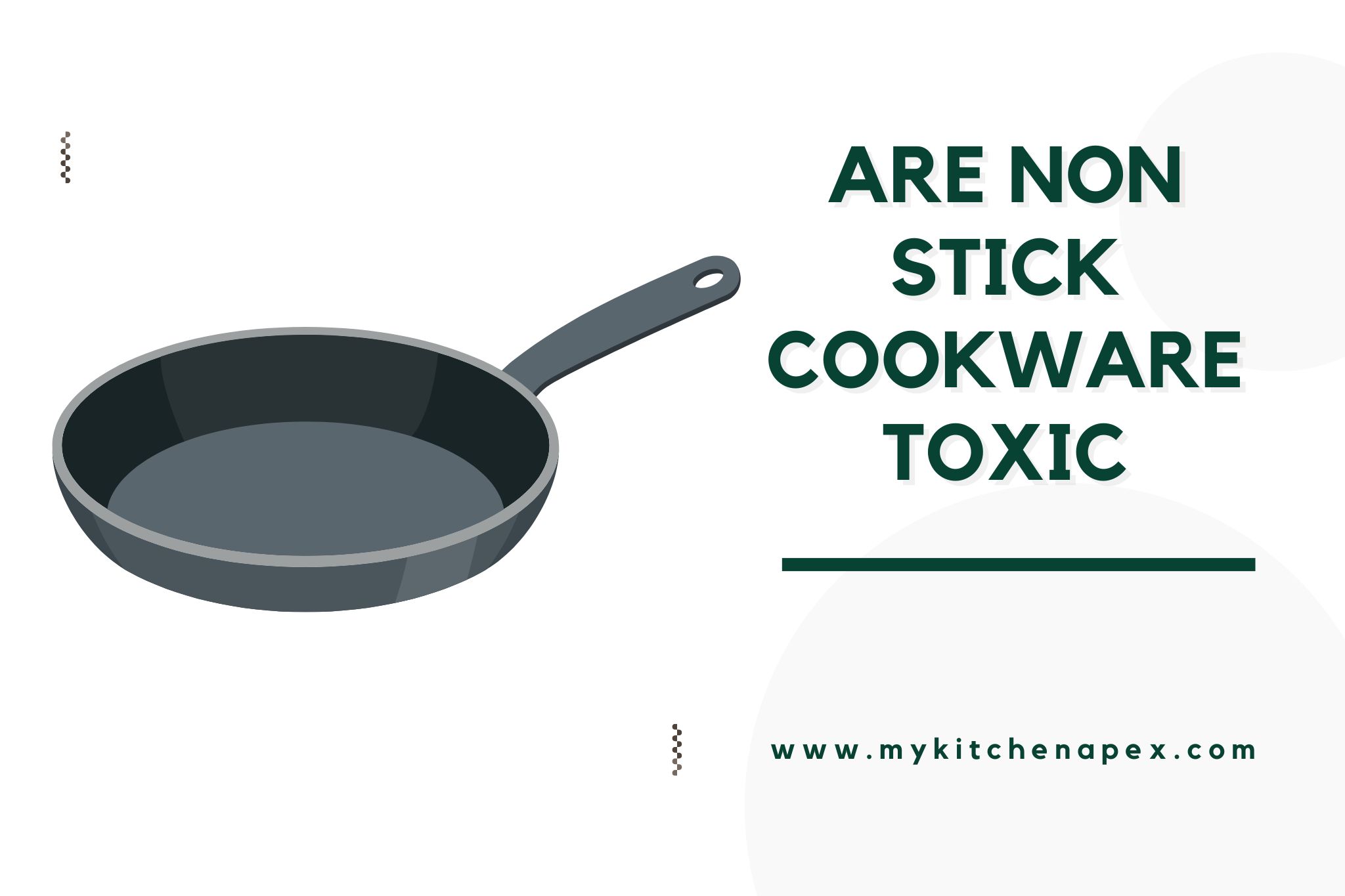Curious about whether your non-stick cookware is toxic? Many of us rely on the convenience of non-stick pots and pans for easy cooking and cleaning, but have you ever wondered about the potential health risks? With the rise in awareness of harmful chemicals in everyday products, it’s important to understand the potential impact of non-stick cookware on our well-being.
Recent studies have shed light on the potential dangers of certain chemicals used in non-stick coatings, leading to concerns about their safety for both home cooks and professional chefs.
As we strive to make informed choices for our health and the health of our loved ones, it’s crucial to consider the impact of our cookware choices on our overall well-being.
Table of Content
Highlights:
- Non-stick cookware can release toxic fumes when overheated.
- Some non-stick coatings contain harmful chemicals like PFOA and PFTE.
- Scratched non-stick pans can release toxic chemicals into food.
are non stick cookware toxic
Non-stick cookware is generally considered safe when used properly and not overheated. However, there are concerns about the potential health risks of non-stick coatings, such as perfluorooctanoic acid (PFOA) and polytetrafluoroethylene (PTFE), which can be released into the air and food when the cookware is heated to high temperatures.
It’s important to invest in high-quality non-stick cookware that is PFOA-free and PTFE-free to minimize the risk of exposure to toxic substances. Additionally, using non-abrasive utensils and avoiding cooking at high temperatures can help prolong the lifespan of non-stick cookware and reduce the likelihood of harmful chemicals leaching into food.
Overall, while non-stick cookware can be a convenient choice in the kitchen, it’s important to be mindful of how it is used to minimize potential health risks.
You May Also Like: can you use induction cookware on a gas stove
What are the dangers of non stick cookware?
Non-stick cookware has been a popular choice for many households due to its convenience and easy cleanup. However, there are potential dangers associated with non-stick cookware, particularly when it is overheated. When non-stick cookware is exposed to high heat, it can release toxic fumes, which can be harmful to both humans and pets. These fumes can cause flu-like symptoms in humans and can be fatal to birds.
In addition to the potential release of toxic fumes, some non-stick cookware contains perfluorooctanoic acid (PFOA), a chemical that has been linked to health concerns such as cancer and reproductive issues.
While many manufacturers have phased out the use of PFOA in their products, there are still potential risks associated with non-stick coatings. It’s important to use non-stick cookware carefully and avoid overheating it to minimize the potential dangers.
How to choose safe non stick cookware?
When choosing safe non-stick cookware, it’s important to look for options that are free of harmful chemicals such as PFOA, PFAS, and PTFE. Opt for cookware with a ceramic-based non-stick coating, as it is considered to be a safer alternative to traditional non-stick coatings. Additionally, consider the overall construction of the cookware, ensuring it is durable and able to withstand high temperatures without releasing toxic fumes.
Another factor to consider when selecting safe non-stick cookware is the brand’s reputation and certifications. Look for cookware that is certified by reputable organizations such as the FDA or NSF, ensuring that it meets safety and quality standards. It’s also important to consider the care and maintenance of the cookware, as improper use or cleaning can compromise its safety.
By choosing non-stick cookware that is free of harmful chemicals, has a durable construction, and is backed by reputable certifications, you can ensure that your cookware is safe for use in your kitchen.
Also Read: can you use induction cookware on an electric stove
Is it safe to cook with scratched non stick pan?
Cooking with a scratched non-stick pan can be potentially harmful as it can release toxic chemicals into your food. When the non-stick coating of a pan becomes scratched, it exposes the underlying metal, which can react with certain foods and lead to the release of harmful chemicals. These chemicals can pose health risks such as liver damage and developmental issues.
To ensure the safety of your cooking, it is important to replace scratched non-stick pans with new ones. Using scratched non-stick pans can also affect the flavor and texture of your food, as the damaged surface may cause uneven cooking and food sticking to the pan.
By replacing scratched non-stick pans, you can avoid potential health risks and ensure the quality of your cooking.
Are all non-stick pans made of Teflon?
Not all non-stick pans are made of Teflon. While Teflon is a popular coating used for non-stick pans, there are other materials such as ceramic, silicone, and other proprietary coatings that are also used to create non-stick cooking surfaces.
These alternatives have gained popularity due to concerns about the safety of Teflon, as some studies have found that the chemicals used in Teflon coatings can release toxic fumes when overheated.
Manufacturers are continuously developing new non-stick technologies to offer more durable and safer options for consumers.
It’s important to research and consider the material used in non-stick pans when making a purchase, to ensure that it meets safety and performance requirements. Ultimately, while Teflon is a common non-stick coating, it’s not the only option available on the market.
Also Read: why stainless steel cookware is better
Final Thoughts
Non-stick cookware can release toxic fumes and chemicals when overheated or scratched, posing potential health risks. It’s important to choose PFOA-free and PTFE-free cookware, opt for ceramic-based coatings, consider brand reputation and certifications, and replace scratched pans to ensure safety.
Additionally, non-Teflon alternatives like ceramic and silicone offer safer options. Prioritize research and informed choices to minimize health risks associated with non-stick cookware.

